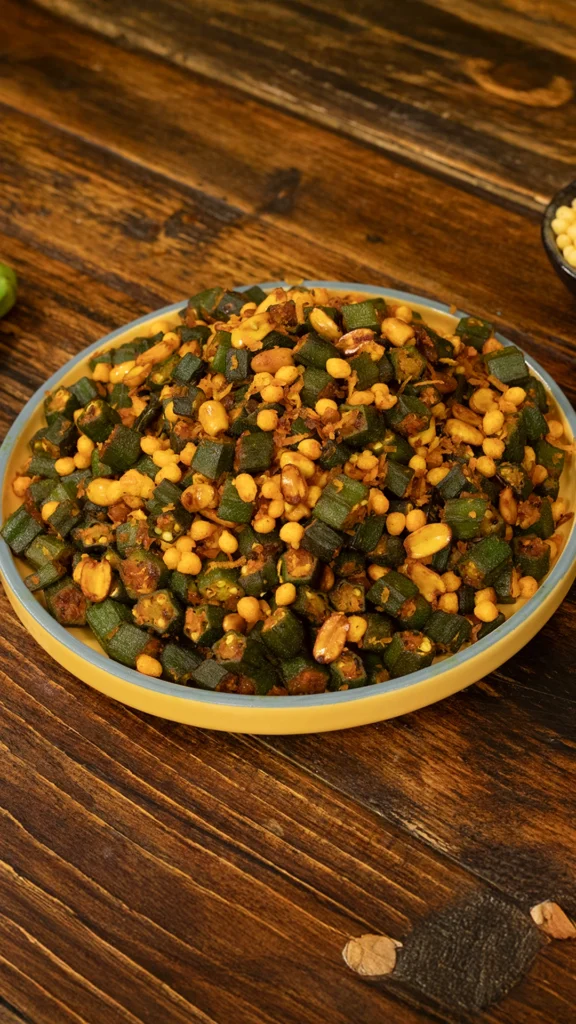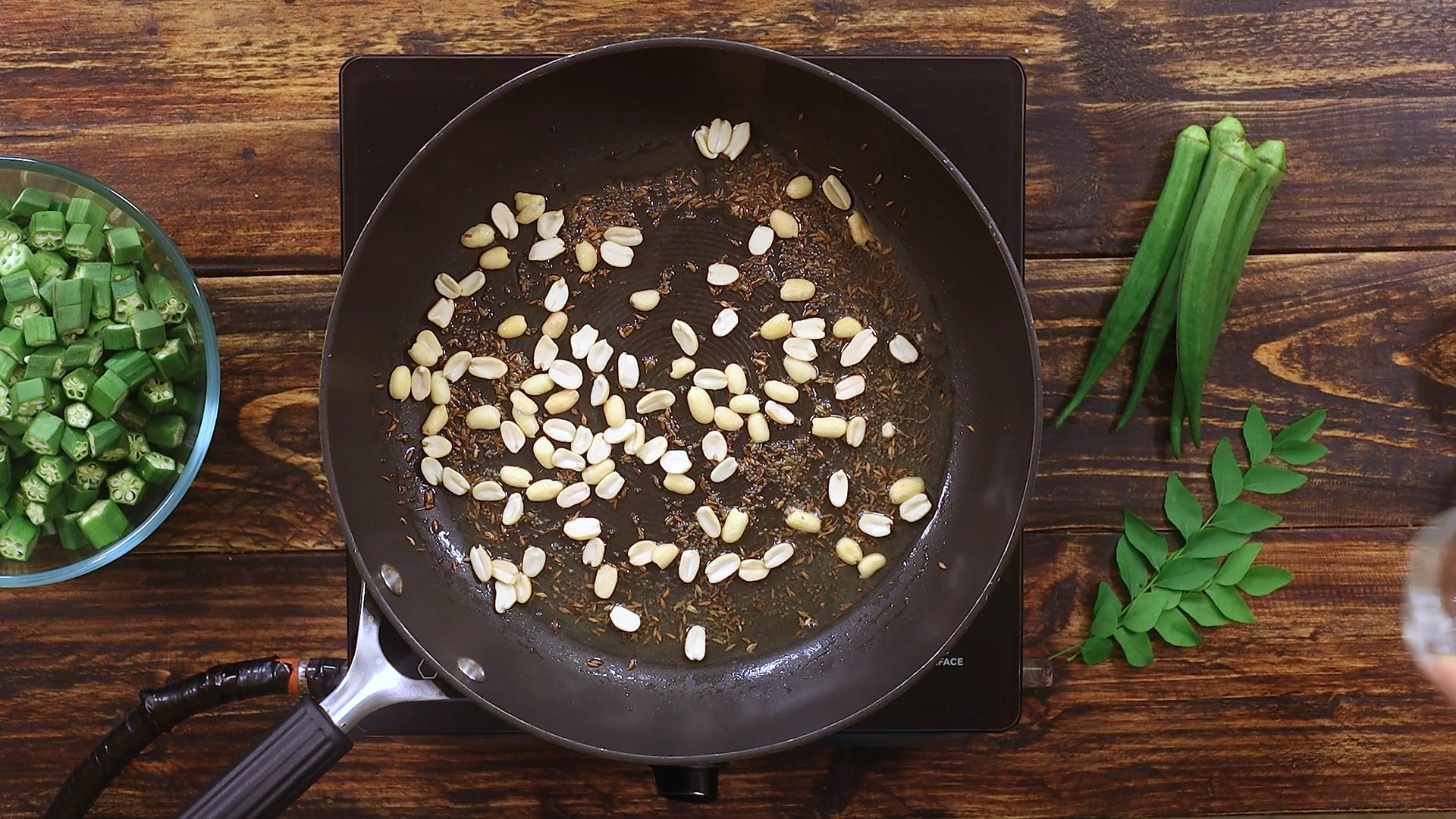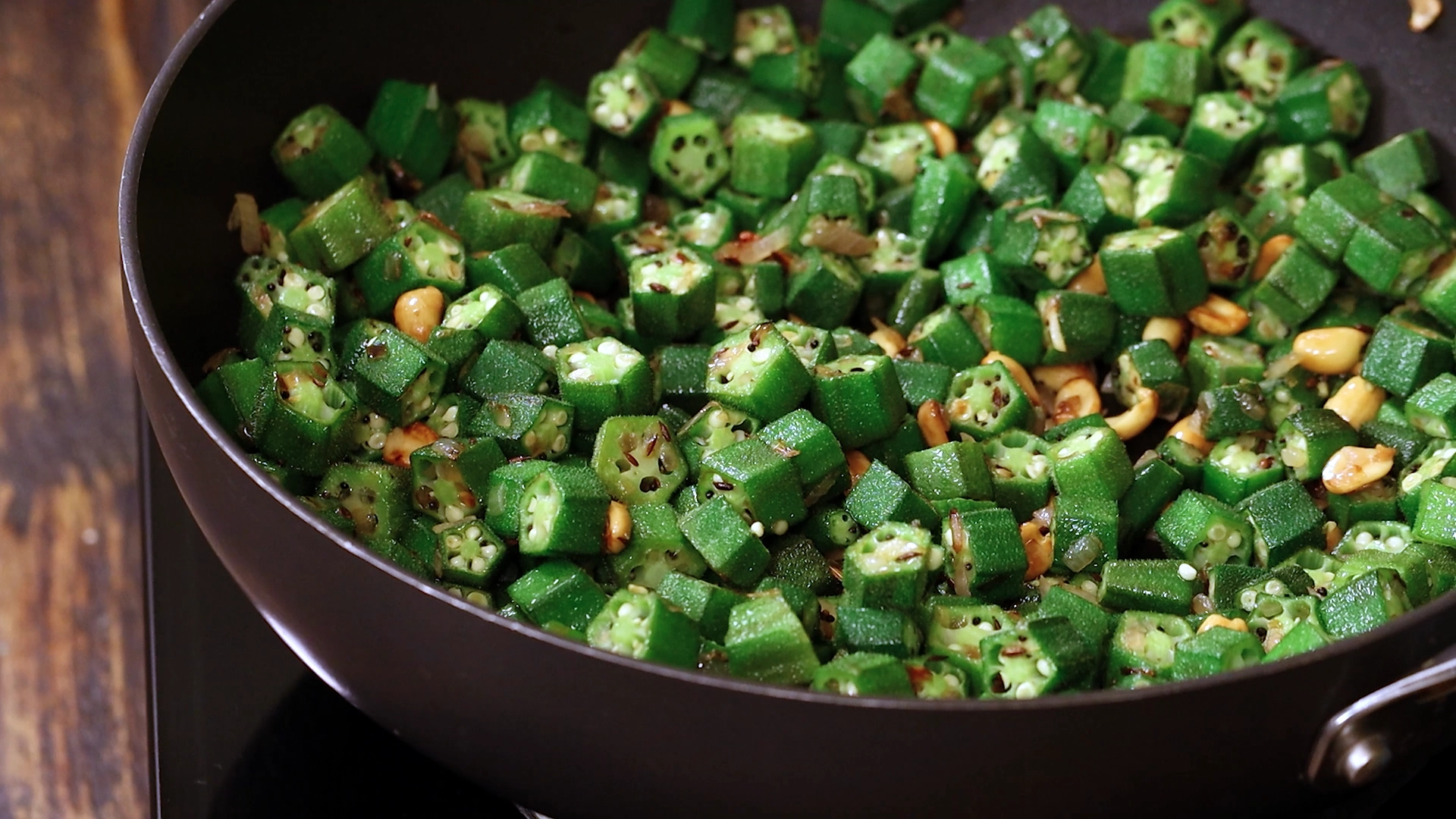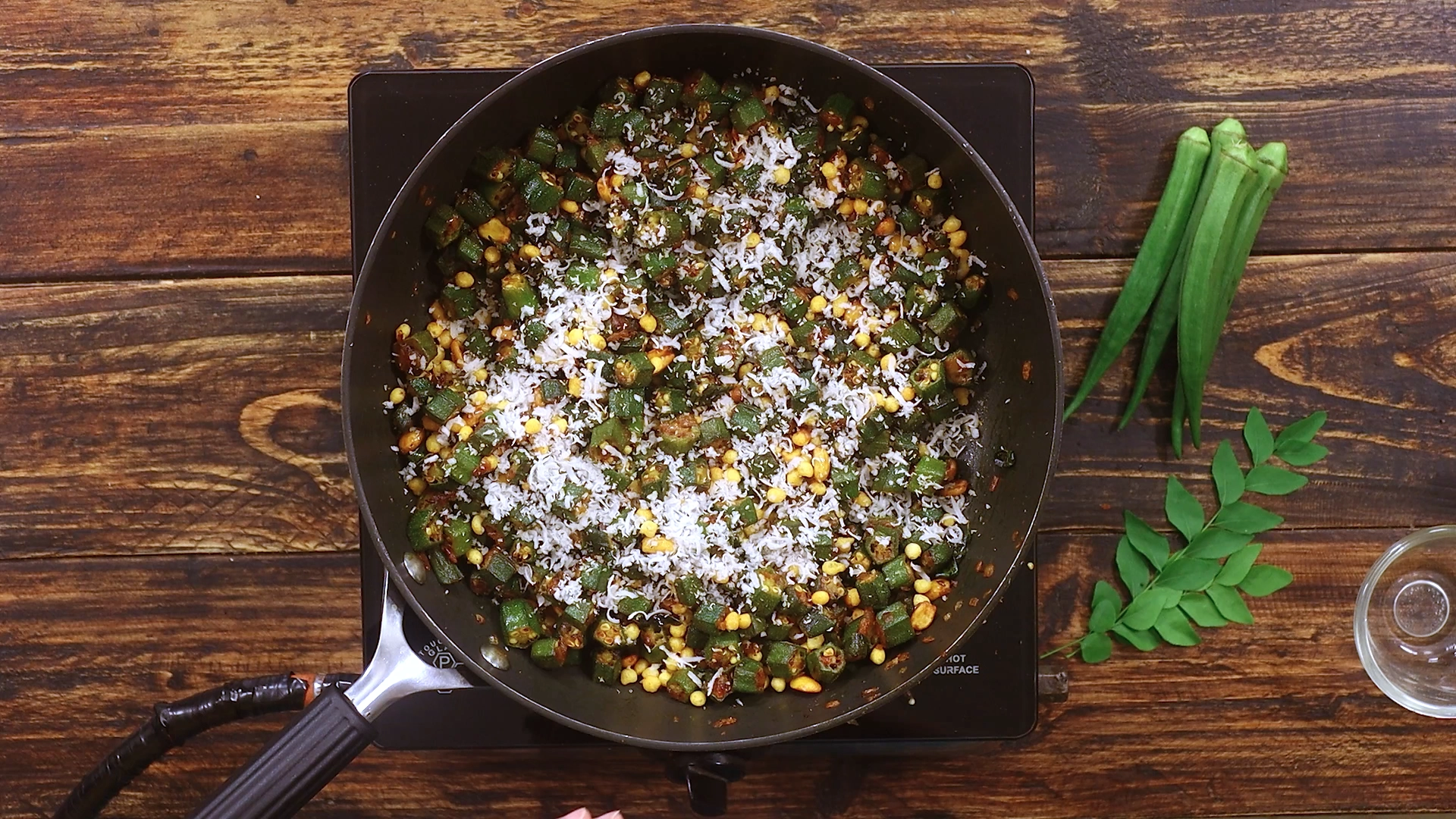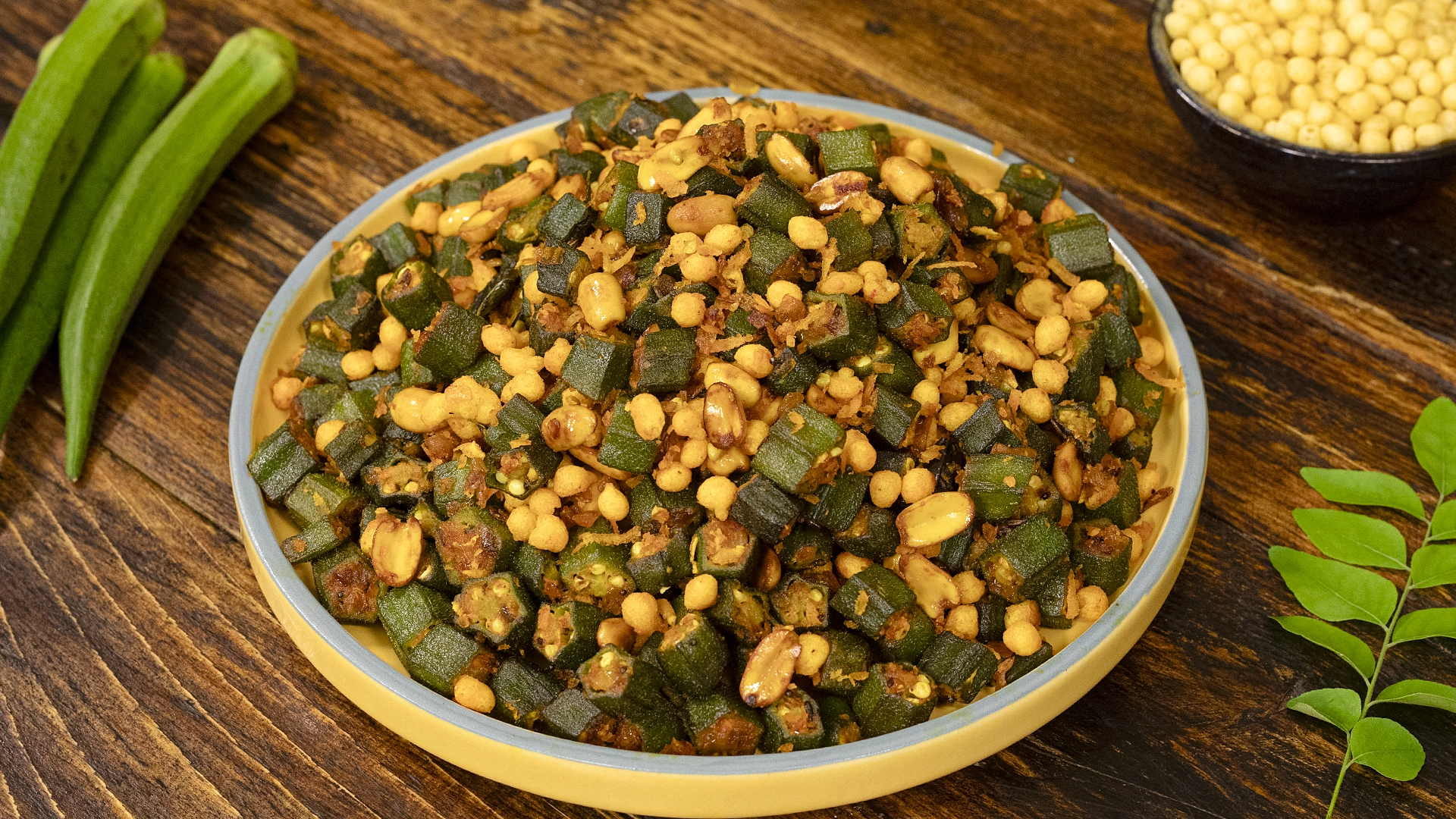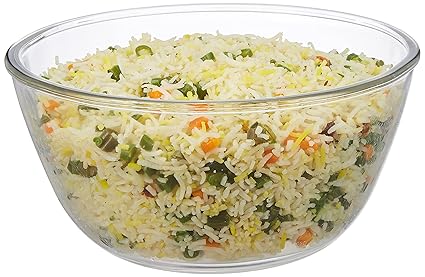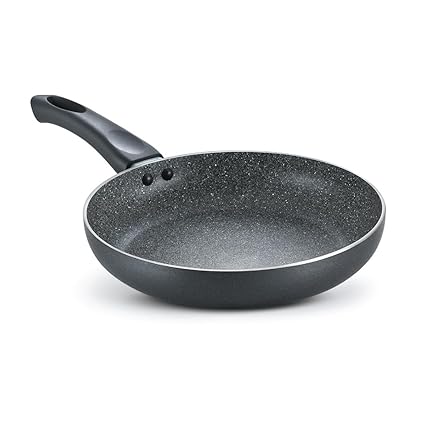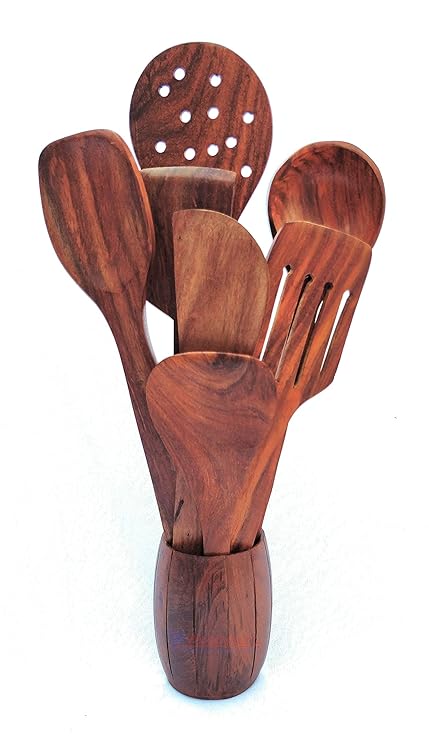Ever wish a humble side dish could totally transform plain rice?
Make this Bhindi Boondi Fry and your steamed rice will never be boring again. It’s crispy, slightly tangy from the curry leaves and peanuts, and that pop of boondi gives every bite an addictive crunch. Perfect for weeknights when you want flavour without fuss.
A quick note on cuisine
This is a South Indian / Andhra-style side that uses simple pantry ingredients to create layers of flavour. It’s the sort of homely dish you’ll find in everyday thalis across the region — simple to make, and designed to partner with rice, rasam, or sambar.
Why this dish is great
- Speedy: Minimal prep, quick cook — ideal for busy evenings.
- Textural magic: The boondi adds crunchy contrast to soft okra.
- Balanced nutrition: Okra gives fibre and vitamins; peanuts add protein and healthy fats.
- Kid-friendly adaptation: Mild spice and crispy bits make it easier to get kids to eat vegetables.
Ingredients breakdown — what each component brings
- Bhindi/okra — the star: tender but slightly mucilaginous; when cooked right it’s silky without being slimy.
- Boondi — small fried gram flour pearls that add crunch and soak up flavour.
- Onion + curry leaves — sweet + aromatic base. Curry leaves give that unmistakable South-Indian lift.
- Peanuts — earthy crunch and protein that makes the dish more satisfying.
- Mustard + cumin + hing — tempering spices that create the aromatic backbone.
- Turmeric + chilli powder — colour and warmth; keep chilli moderate if serving kids.
- Desiccated/fresh coconut — a finishing touch for fragrance and subtle sweetness.
How the recipe comes together
You’ll start by warming oil and blooming mustard and cumin so the spices wake up. Add the roasted peanuts and onions — let the onions soften until they start to sweeten. Toss in your sliced okra and let it cook over medium so it dries out nicely and develops a light sear — that’s the trick to avoid sliminess. Once the okra is nearly done, sprinkle in turmeric, chilli and a pinch of hing, stir gently and cover briefly to finish the cooking.
Now for the texture: fold in crispy boondi just before finishing so it retains its crunch. A final shower of freshly grated (or desiccated) coconut and curry leaves brightens everything and adds a fresh contrast.
💡 Pro Tip: Dry the sliced okra on a kitchen towel for a few minutes before cooking — less surface moisture = less slime and better crisping.
What it tastes like
Think tender-crisp okra tossed in warm, toasty spices, sweet-soft onions and roasted peanuts — then finished with crunchy boondi and a hint of fresh coconut.
The result is a balanced combo of crisp + soft + nutty + spicy, with little bursts of texture that keep you reaching for another spoonful.
What goes along with Bhindi Boondi Fry
- Steaming hot rice (jeera or plain) — classic and comforting.
- Rasam or sambar — the thin, tangy gravies pair beautifully.
- Plain roti, phulka or dosa — use it as a stuffing or side.
- Cooling sides: cucumber salad or plain curd to balance the spice.
How to serve
Serve immediately while the boondi is still crunchy. Plate it beside a mound of hot rice, drizzle a little ghee (or oil) if you like, and garnish with extra coconut and curry leaves for colour.
Packing for lunch / tiffin tips
- Pack rice separately from the bhindi-boondi if possible — the boondi softens with moisture.
- If you must pack together, add the boondi at the last minute, or place it in a small separate container to mix in just before eating.
- Reheat gently on a pan; avoid microwaving at high heat that makes the boondi soggy.
Party & bulk-prep advice
- Make the okra and spice mix in big batches and keep boondi separate. At serving time, toss boondi through in small batches so each plate has crunch.
- Prep the sliced okra ahead and dry it in the fridge — it cooks faster and fries crisper.
- The dish scales well — keep stirring and don’t overcrowd the pan so the okra can sear.
Bhindi Boondi Fry
Description
This Andhra-style bhindi boondi fry is a simple, homely side dish that brings together tender okra, crispy boondi, roasted peanuts, and a touch of coconut for extra flavor. It’s light, crunchy, and goes beautifully with everyday meals like sambar rice, rasam, or curd rice. If you’re looking for an easy recipe that turns everyday ingredients into something special, this is a dish you’ll come back to again and again.
Ingredients
Instructions
Prep Work
-
Wash and dry okra
Wash okra well, dry completely so it doesn’t get slimy while cooking
-
Trim and cut okra
Remove stems and chop into medium-sized pieces -
Chop onion
Peel and finely chop the onion -
Chop peanuts
Roughly chop the roasted peanuts so they add bite -
Grate coconut
Grate or measure desiccated coconut and keep ready -
Measure spices & boondi
Measure out boondi, spices and keep curry leaves ready
Method
-
Heat oil and splutter seeds
In a wide pan, heat some oil. once hot, add mustard seeds and cumin seeds and let them splutter
-
Add roasted peanuts
Add peeled roasted peanuts and sauté briefly until they smell toasty -
Sauté onions
Add finely chopped onions and sauté until golden -
Add chopped okra
Add the cut okra pieces to the pan. mix well and sauté on medium flame, stirring occasionally for 10 mins. -
Spice it up
Add salt, turmeric powder, red chilli powder, a pinch of asafoetida and curry leaves. Stir everything together. -
Cover and cook
Cover the pan and cook on low flame until the okra is cooked and lightly crispy for another 10 more minutes -
Add boondi
Once done, add a handful of crispy boondi and give it a gentle mix -
Finish with coconut
Finally sprinkle a little freshly grated coconut and give it one last mix -
Serve
Serve warm as a side with sambar rice, rasam or curd rice
Nutrition Facts
Servings 5
- Amount Per Serving
- Calories 190kcal
- % Daily Value *
- Total Fat 9.6g15%
- Saturated Fat 2.2g12%
- Sodium 467mg20%
- Potassium 576mg17%
- Total Carbohydrate 24g8%
- Dietary Fiber 6.4g26%
- Sugars 3.8g
- Protein 5.8g12%
- Vitamin A 625 IU
- Vitamin C 39.7 mg
- Calcium 151 mg
- Iron 1.5 mg
* Percent Daily Values are based on a 2,000 calorie diet. Your daily value may be higher or lower depending on your calorie needs.

